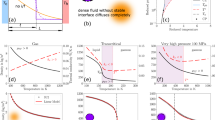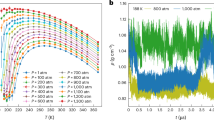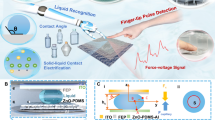Abstract
DURING recent years the process of liquid-liquid extraction has become progressively more important and the mechanism of solute transfer between liquid droplets and a second substantially immiscible liquid environment has received considerable attention. In the course of their work in this field, Lewis and Pratt1 observed that when solute transfer, for example, acetone, occurred between hydrocarbon droplets and water, then in many cases, the droplets exhibited rapid and violent oscillations which they termed ‘kicking’. Systems which exhibited this effect were found to have higher mass transfer rates than those predicted from theoretical considerations2. More recently the phenomenon of droplet oscillation in liquid-liquid systems has been the subject of extensive study, notably by Haydon3 and Davies and Haydon4. These workers concluded that droplet oscillation was the result of the interfacial solute concentration becoming non-uniform, thereby giving rise to local interfacial tension variations which resulted in temporary droplet instability.
This is a preview of subscription content, access via your institution
Access options
Subscribe to this journal
Receive 51 print issues and online access
$199.00 per year
only $3.90 per issue
Buy this article
- Purchase on SpringerLink
- Instant access to full article PDF
Prices may be subject to local taxes which are calculated during checkout
Similar content being viewed by others
References
Lewis, J. B., and Pratt, H. R. C., Nature, 171, 1155 (1953).
Lewis, J. B., Chem. Eng. Sci., 3, 248 (1954).
Haydon, D. A., Proc. Roy. Soc., A, 243, 483 (1958).
Davies, T. V., and Haydon, D. A., Proc. Roy. Soc., A, 243, 492 (1958).
Author information
Authors and Affiliations
Rights and permissions
About this article
Cite this article
RAMSHAW, C., THORNTON, J. Droplet Circulation and Interfacial Disturbances in Gas-Liquid Systems. Nature 184, 719 (1959). https://doi.org/10.1038/184719a0
Issue date:
DOI: https://doi.org/10.1038/184719a0



